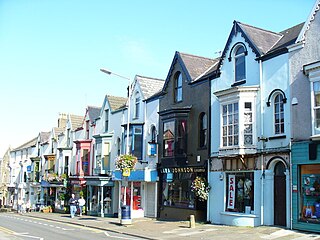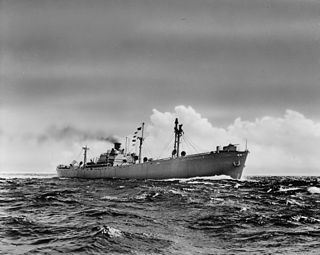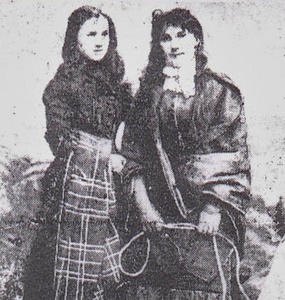
The Bristol Channel is a major inlet in the island of Great Britain, separating South Wales and South West England. It extends from the smaller Severn Estuary of the River Severn to the North Atlantic Ocean. It takes its name from the English city and port of Bristol.

Lynmouth is a village in Devon, England, on the northern edge of Exmoor. The village straddles the confluence of the West Lyn and East Lyn rivers, in a gorge 700 feet (210 m) below Lynton, which was the only place to expand to once Lynmouth became as built-up as possible. The villages are connected by the Lynton and Lynmouth Cliff Railway, which works two cable-connected cars by gravity, using water tanks.

Swansea Bay is a bay on the southern coast of Wales. The River Neath, River Tawe, River Afan, River Kenfig and Clyne River flow into the bay. Swansea Bay and the upper reaches of the Bristol Channel experience a large tidal range. The shipping ports in Swansea Bay are Swansea Docks, Port Talbot Docks and Briton Ferry wharfs.

Mumbles Lighthouse, completed in 1794, is a lighthouse located in Mumbles, near Swansea. The structure, which sits on the outer of two islands off Mumbles Head, is clearly visible from any point along the five mile sweep of Swansea Bay. Along with the nearby lifeboat station, it is the most photographed landmark in the village.

The Swansea and Mumbles Railway was the venue for the world's first passenger horsecar railway service, located in Swansea, Wales, United Kingdom.

Oystermouth is a village in the district of Mumbles, Swansea, Wales. It is part of the Mumbles community.

SS Samtampa was a 7,219 ton steamship wrecked on Sker Point, off Porthcawl and Kenfig, Wales, in the Bristol Channel on 23 April 1947. At the time of the shipwreck, the Samtampa was operated by the Houlder Line.

Bracelet Bay is a small bay on the south of the Gower Peninsula. It is the first bay one comes to after leaving Swansea Bay and rounding Mumbles Head.

The Grade II listed structure of Mumbles Pier is an 835 feet (255 m) long Victorian pleasure pier built in 1898. It is located at the south-western corner of Swansea Bay near the village of Mumbles, within the city and county of Swansea, Wales.

Sker Point is a headland in Bridgend County Borough on the South Wales coast between Port Talbot and Porthcawl. It marks the south end of Kenfig Sands. The placename Sker is of Old Norse origin, and means skerry.

Worm's Head is a headland, at Rhossili, part of the City and County of Swansea, Wales. It is the furthest westerly point of the Gower Peninsula. The name Worm's Head is derived from an Old English word 'wyrm' for 'sea serpent'. The headland of carboniferous limestone comprises three islands: the Inner Head, the Middle Head which features a collapsed sea cave and is known as the Devil's Bridge, and the Outer Head. In total, it is approximately one mile long. The Inner Head is up to 200 yards wide. Worm's Head is only accessible on foot for 2+1⁄2 hours either side of low tide, fatal to attempt to wade or swim to when the causeway from the mainland is flooded.

The Mumbles is a district of Swansea, Wales, located on the south-east corner of the unitary authority area. It is also a local government community using the same name. At the 2001 census the population was 16,774, reduced slightly to 16,600 at the 2011 Census. The district is named after the headland of Mumbles, located on its south-east corner.

The Lizard Lifeboat Station can refer to several Royal National Lifeboat Institution lifeboat stations located on the Lizard in Cornwall, United Kingdom. The first was established at the southernmost point of the peninsula in 1859. Since then successive stations have all been in operation at different locations on The Lizard. The current station is located at Kilcobben Cove 0.5 mi (0.80 km) east of the village of Lizard.

The Mumbles Lifeboat Station opened in 1835 with a lifeboat that was funded and managed by Swansea Harbour Trustees and was known as Swansea Lifeboat Station. The station was taken over by the RNLI in 1863 and moved to Mumbles in 1866. The station only officially became The Mumbles Lifeboat Station in 1904.

Horton and Port Eynon Lifeboat Station opened in 1884 and was originally based in Port Eynon.
The Mumbles lifeboat disaster occurred in 1947 off south Wales when the Mumbles lifeboat was undertaking a rescue off Sker Point but was overwhelmed by the sea. All eight people in the lifeboat died as result.

Jessie Ace (1860–1936) and Margaret Wright are known for their rescue of crewmen from the Mumbles lifeboat, which had gone to assist a wrecked German barque during an 1883 storm at Mumbles Head, Wales.

All Saints' Church, Oystermouth is an Anglican church in the diocese of Swansea and Brecon, south Wales. It is located in Mumbles and is a Grade II listed building The church stands on a hillside, not far from Oystermouth Castle.




















